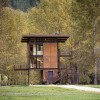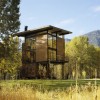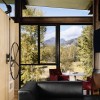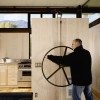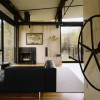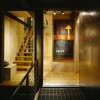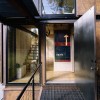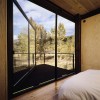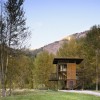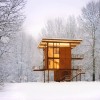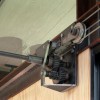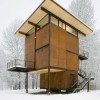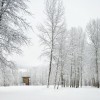House of the Month: The Versatile Delta Shelter
The Delta Shelter, by Olson Kundig Architects, rises above its site on stilts. When unoccupied, it is shuttered against the elements and reduced to its simplest form: a metal box. In concept, it is not so different from the timber observation towers that are scattered throughout the North American wilderness and used for the purpose of hunting or habitat viewing. In fact, the 1,000 sq. ft. Delta Shelter, like its vernacular counterparts, is a rural retreat situated on a remote site in the North Cascade Mountains of Mazama, Washington.

Tom Kundig, Design Principal at Olson Kundig and architect for the cabin, stacked two stories of living quarters on top of four steel columns in order to limit the building’s footprint to 200 sq. ft. The elevated design also protects the house from water, since the site is located on a 100-year floodplain by the Methow River.
Weathering steel was chosen for exterior cladding; the rustic character of the material leant itself to the uncomplicated design of the cabin and also fit with the owner’s desire that the house be impervious to its rugged environment. The steel is low maintenance and provides ideal protection for the home when it is fully enclosed.
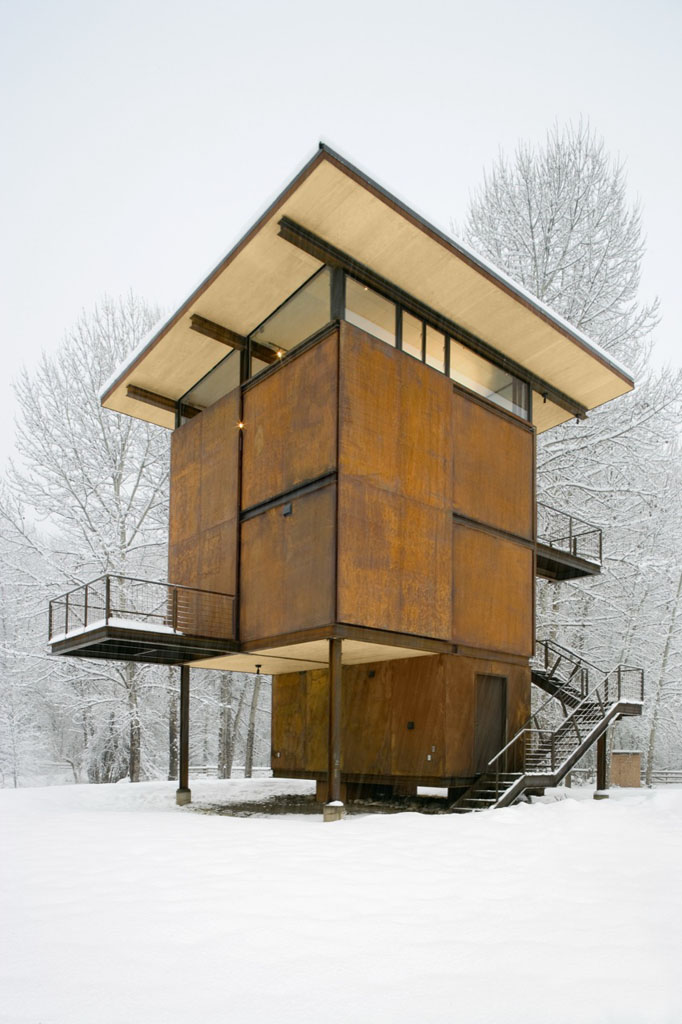
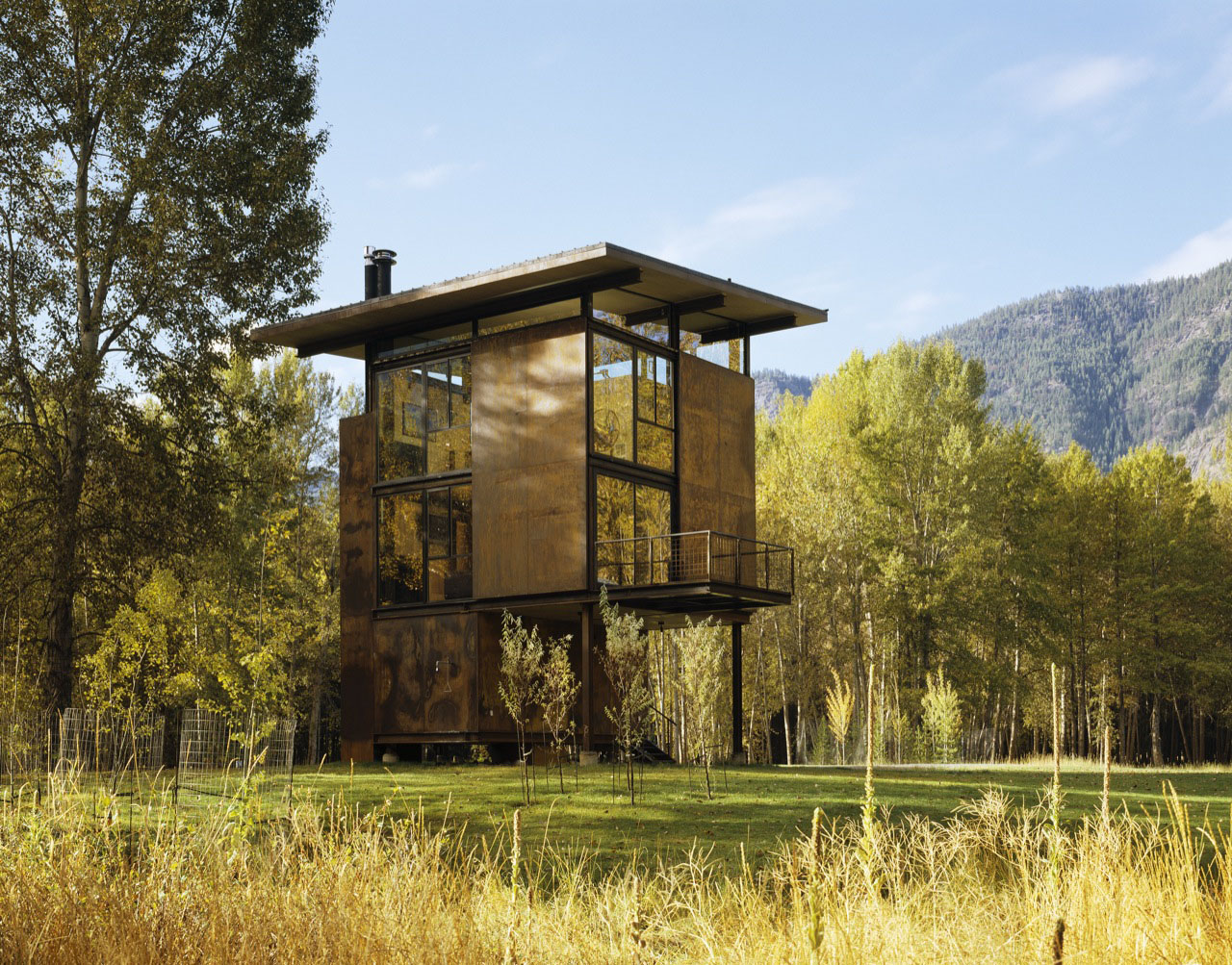
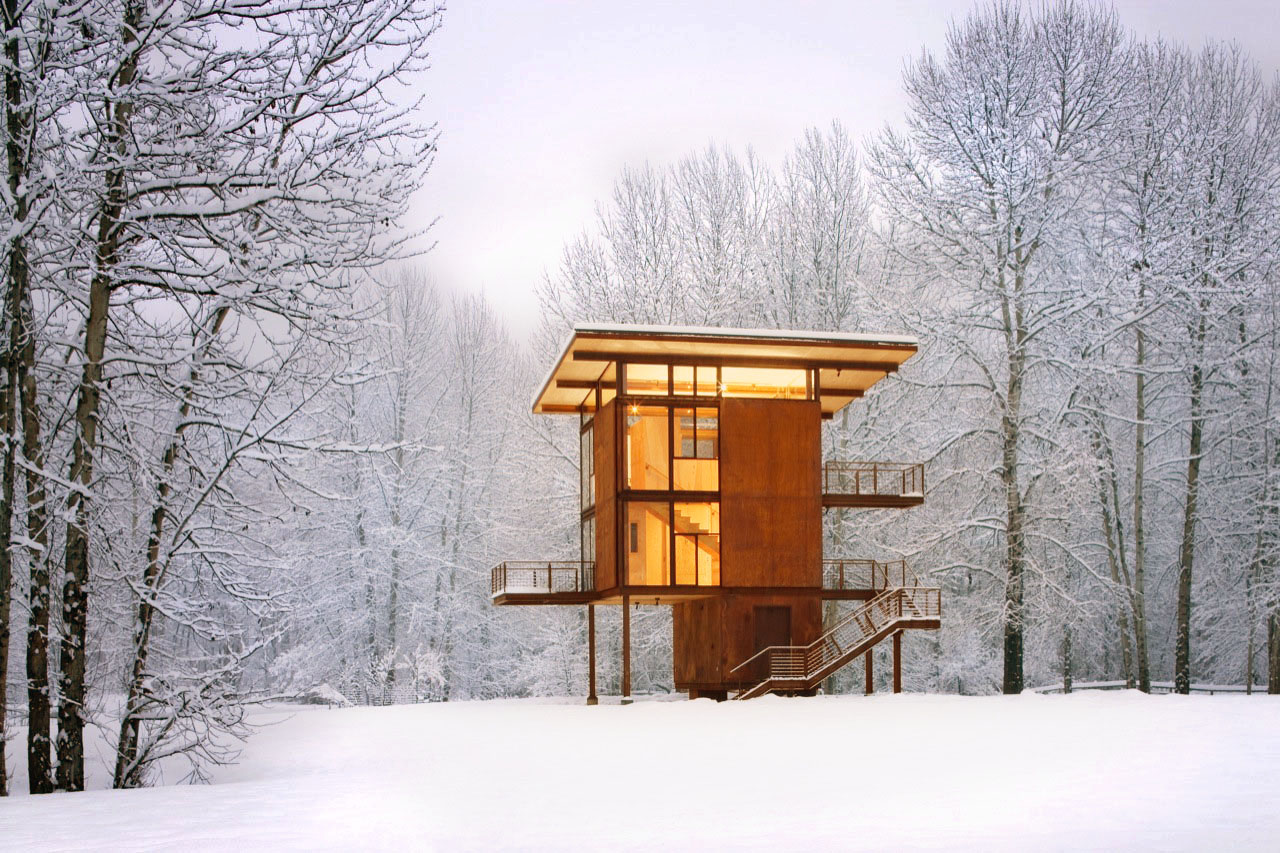
When the Delta Shelter’s owner is in residence, four 10’ x 18’ wall panels, or "shutters," can be rolled back, opening the whole house to the outdoors. In keeping with the sustainability of the design, the mechanism for opening these shutters is human-powered. A system that includes drive shafts, u-joints, spur gears, and cables allows users to simply turn a handwheel to simultaneously open the four sides of the building, revealing floor-to-ceiling glazed walls.
Just as opening the shutters transforms the house from a closed box to a transparent and penetrable form, the verticality of the structure ceases to be a device for isolating the building from its environment and becomes a means of engaging visitors with the space. Circulation patterns within the cabin are optimized to allow one to fully experience the architecture while remaining united with the site beyond. At ground level, a carport shares space with a storage and utility room. A prominent front stairway – again rendered in a purely utilitarian way – has its departure point here. Featuring steel beams and mesh railings, the stairway winds visitors around the corner of the building and up to the first floor. A bridge of metal decking terminates in an unassuming side entry hall. Two bedrooms and bathrooms, private areas within the cabin, branch off the hall. Hugging the wall, a wooden staircase leads to the top floor. This third level, which contains the kitchen, living, and dining areas, has an open floor plan. Expanses of glass, inset with operable windows of varying scale, overlook the property. Cantilevered balconies extend from both the second and third floors; their materials and positioning serve to express and reinforce the internal flow of traffic.
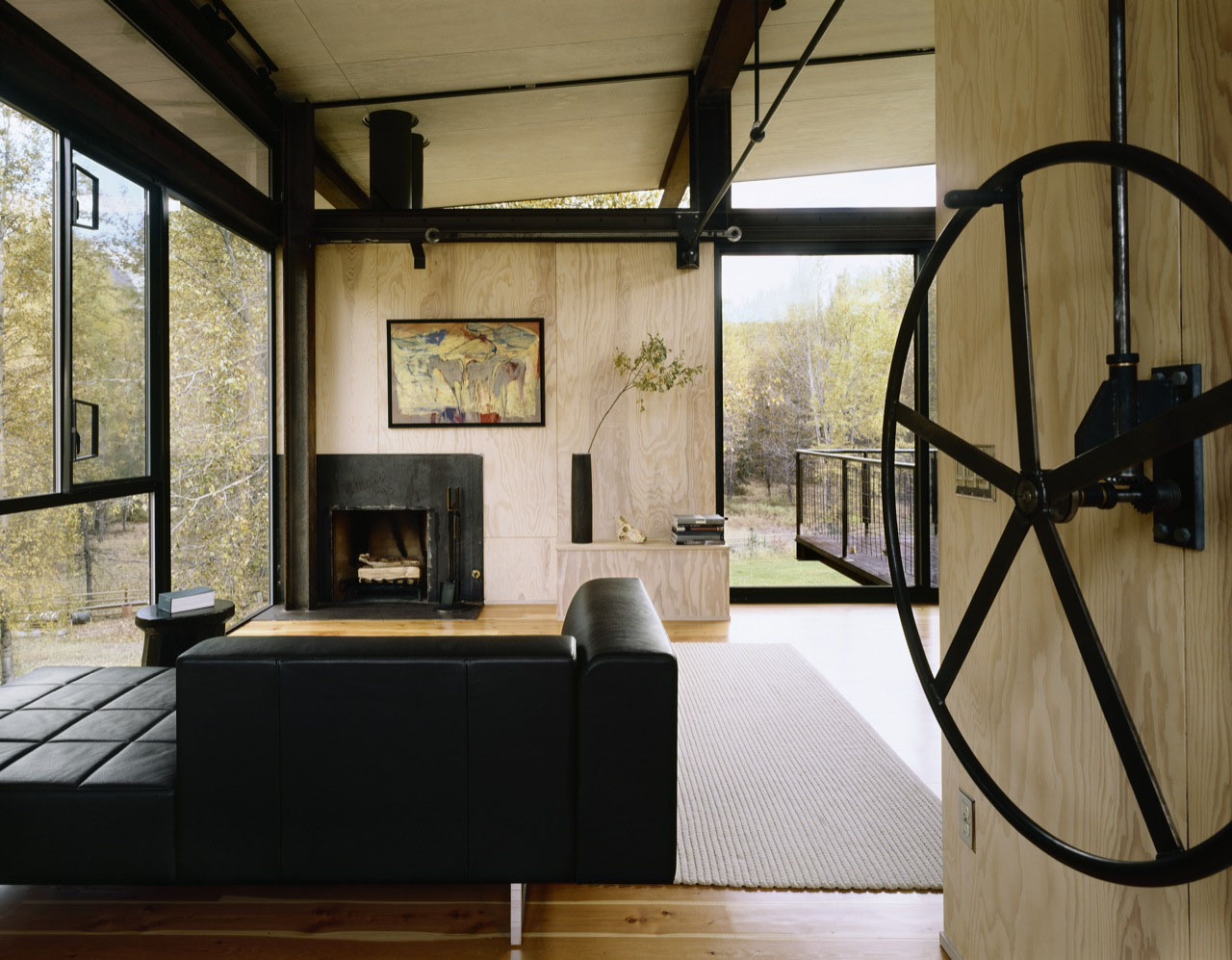
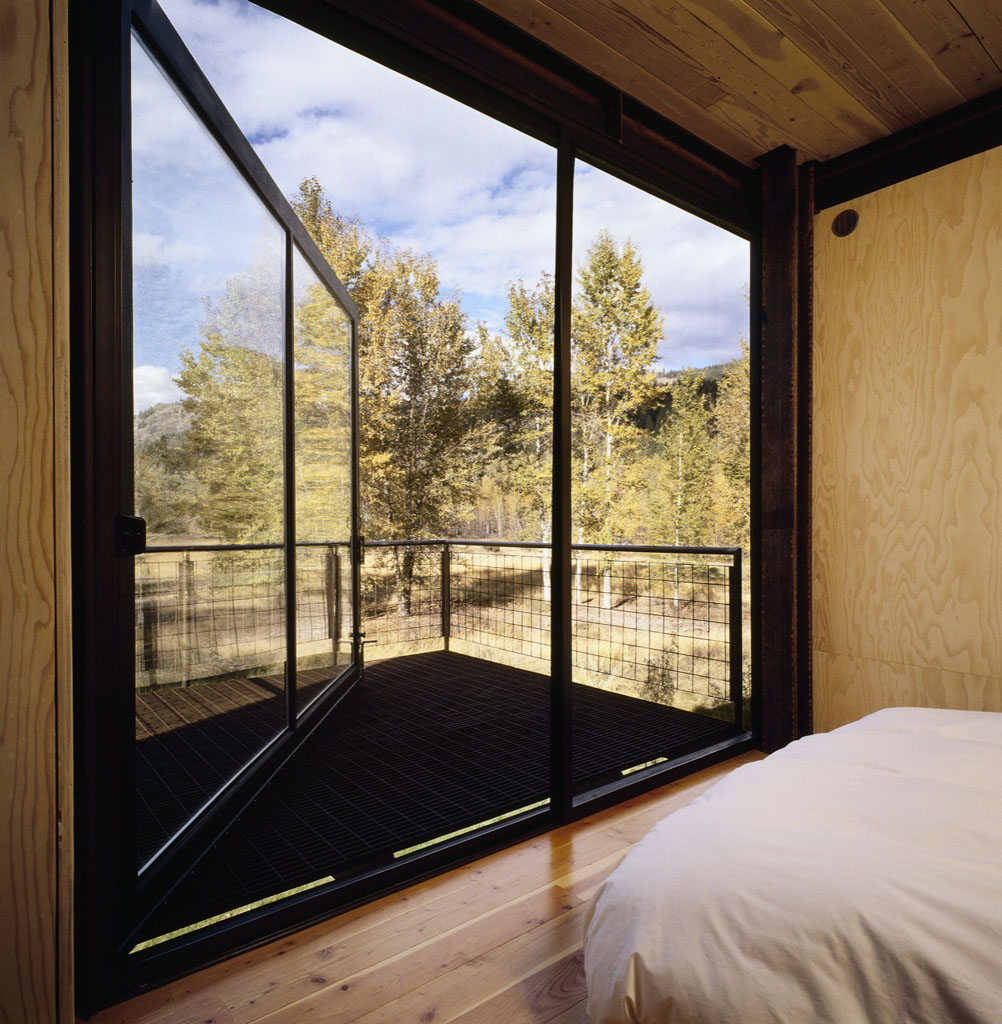
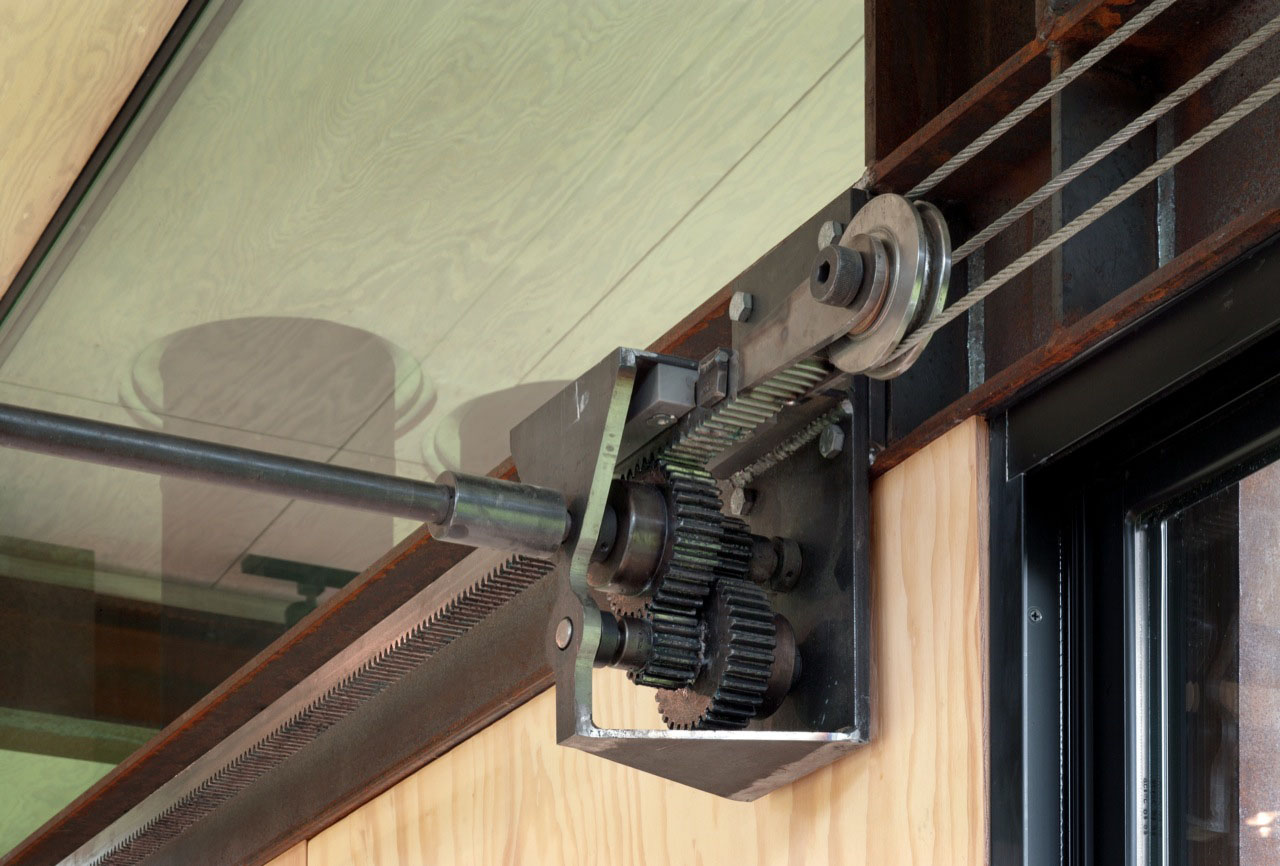
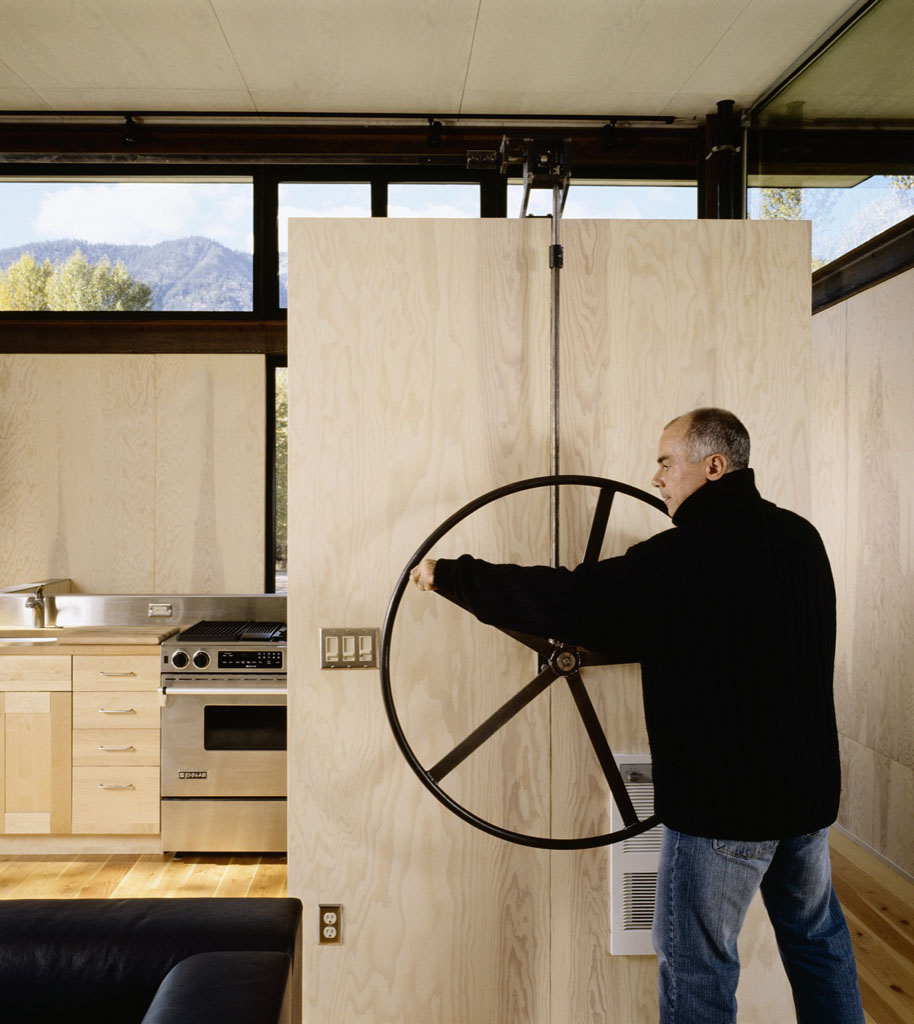
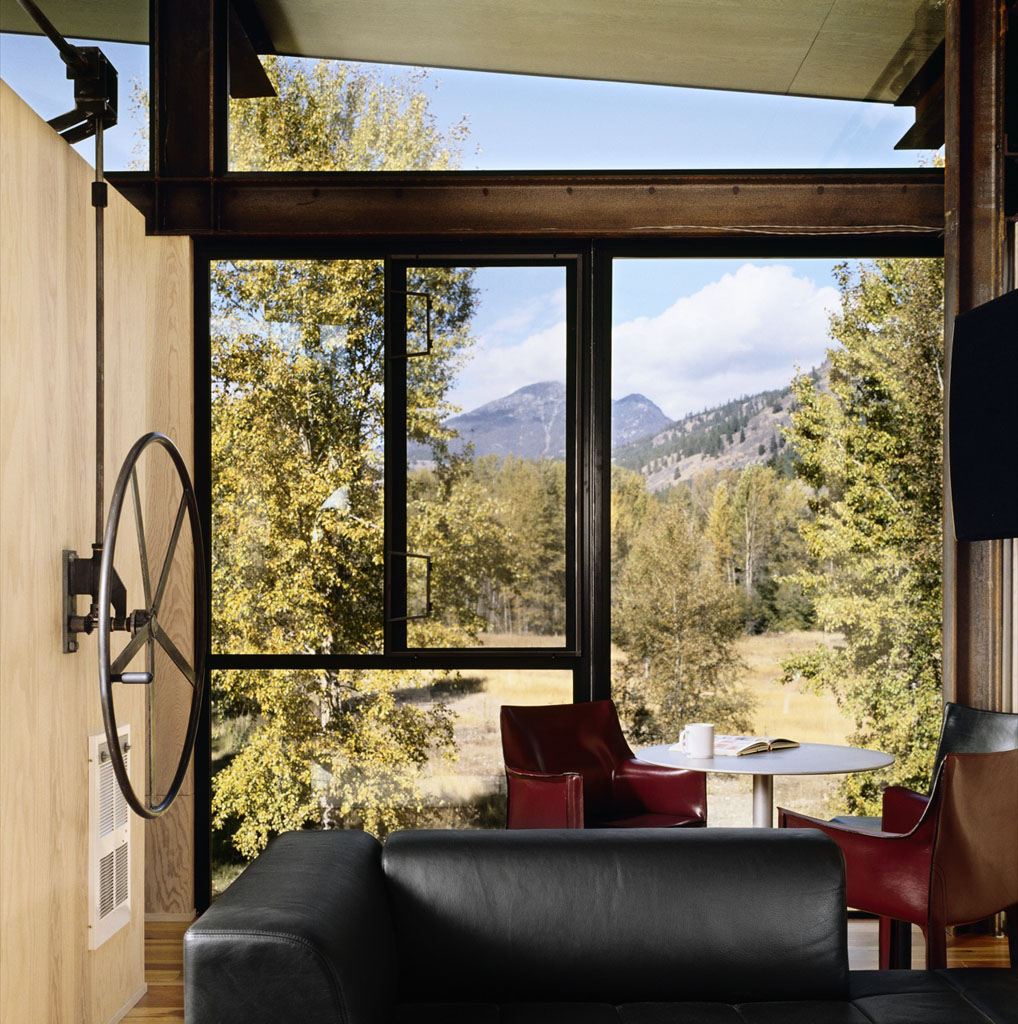
Throughout the interior, materials are warm and natural. Tongue-and-groove wood car-decking (3” x 6”) was used for the floors; kitchen cabinetry and partition walls are finished in light-colored wood. The handwheel that operates the shutters is mounted on a wood partition in the middle of the third floor, and this prominent position gives the simple object the visual impact of an objet d'art.
From its layout to its detailing, the Delta Shelter is made to harmonize with the simplicity of its surroundings. At the same time, each of its components is carefully crafted to elevate the architectural experience of the space.

Kristin Dispenza
Kristin graduated from The Ohio State University in 1988 with a B.S. in architecture and a minor in English literature. Afterward, she moved to Seattle, Washington, and began to work as a freelance design journalist, having regular assignments with Seattle’s Daily Journal of Commerce.
After returning to Ohio in 1995, her freelance activities expanded to include writing for trade publications and websites, as well as other forms of electronic media. In 2011, Kristin became the managing editor for Buildipedia.com.
Kristin has been a features writer for Buildipedia.com since January 2010. Some of her articles include:

